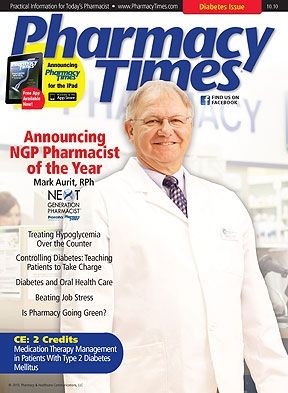Publication
Article
Pharmacy Times
Teenage Drug and Alcohol Abuse: Time to Act!
Author(s):
Partnership for a Drug-Free America guides parents who believe their children may be abusing prescription drug, OTC medication, or alcohol.
Partnership for a Drug-Free America guides parents who believe their children may be abusing prescription drug, OTC medication, or alcohol.

In 2008, the Partnership for a Drug-Free America reported that 4.5 million teenagers, almost 20%, had abused a prescription medication in their lifetimes.
The Partnership for a Drug-Free America has created a new prevention program called “Time to Act.” This program and its Web site (www.drugfree. org/timetoact) were developed to assist parents who think their child may be using drugs or alcohol, or if they know that their child is abusing these substances. The Treatment Research Institute and Purdue Pharma LP cooperated on and supported this program.
Some of the objectives listed for this important program are:
• Inform audience members about the drug/alcohol scene in their community, with a focus on prescription and OTC drugs.
• Introduce the Partnership for a Drug- Free America’s Time to Act Web site and motivate parents to visit the site.
• Share key highlights from the Web site to help parents take action if they think or know their child is using drugs or alcohol.
The site is loaded with great information and resources and is worth reviewing, whether you think your teenager may be abusing drugs or alcohol, or you know for certain. One of the first things that pops up on the Web site is the opportunity to download 2 different e-books.
The first e-book is the Intervention Resource, which guides parents through the issues of whether their child is using, what constitutes an intervention, what they should say to their child, and how to seek outside help if necessary.
The second e-book is the Treatment Guidelines, which defines substance abuse treatment and how to find the best treatment for a particular situation. The important question about paying for treatment is covered, as well as how parents can persuade a possibly reluctant child to take this life-saving step.
Another interesting—and potentially one of the best—features of the Web site is the opportunity for parents to participate in an intervention blog. This can allow the parent of an abusing teenager to exchange ideas, fears, and other information with people who are currently experiencing the issue or have “been there, done that.” The Partnership for a Drug-Free America also provides a newsletter for those interested in signing up for future resources.
Teenage prescription drug abuse continues to be of great concern. In 2008, the Partnership for a Drug-Free America reported that 4.5 million teenagers, almost 20%, had abused a prescription medication in their lifetimes. In addition, the abuse of hydrocodone alone stays steady at almost 10% of high school seniors, year after year.
In 2008, the Drug Abuse Warning Network (DAWN), which measures abuse through emergency department visits, reported that 12- to 20-year-olds made up 14.5% of the visits for nonmedical use of prescription drugs. Overall, this was represented by more than 140,000 incidents during that year.
The Office of National Drug Control Policy may have reported some of the most discouraging news on teenage abuse when they indicated that approximately 2500 teens per day initiated prescription drug abuse in 2007. This was coupled with the report that prescription drug abuse was now the top source of abuse for 12- to 13-year-olds.
The question that always surfaces is where teenagers obtain these drugs, since juveniles are not able to doctor shop, present at an emergency department, or pass false or forged prescriptions, with only a few exceptions.
The majority of the studies seem to indicate they receive drugs from a friend, with second place belonging to the family medicine cabinet. Of course, the question that begs to be answered is, where did the friend get the drugs? I feel sure that a fair percentage also got them from their family or a friend’s medication supply, and then decided to share their wealth with other teenagers.
“Time to Act” appears to be an excellent resource for parents to utilize if they suspect abuse—or if an event that leaves no doubt has occurred, and immediate action needs to be taken. Regardless, pharmacists should take a look at the Web site and pass the word. Chances are somebody you know is either dealing with this issue now or will be in the future.
Cmdr Burke is commander of the Warren County, Ohio, drug task force and retired commander of the Cincinnati Police Pharmaceutical Diversion Squad. He is a 40-year veteran of law enforcement and the current president of the National Association of Drug Diversion Investigators. He can be reached by e-mail at [email protected], via the Web site www.rxdiversion.com, or by phone at 513-336-0070.

Newsletter
Stay informed on drug updates, treatment guidelines, and pharmacy practice trends—subscribe to Pharmacy Times for weekly clinical insights.






